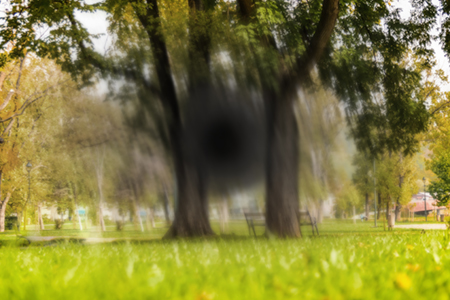Written by Lauren R. Rosecan, MD, PhD, FACS originally printed in the “Journal of the Palm Beach County Medical Society,” August 1988
Macular Degeneration is the leading cause of legal blindness (vision of 20/200 or worse) in Americans over the age of 65. The macula comprises the central part of the retina and is approximately 5.5 millimeters wide. The fovea, which is the epicenter of the macula and controls reading and color vision, is approximately 1.5 millimeters in diameter. With advancing age there is often a degeneration of the macular which may present as either a dry form, that is currently managed by periodic observation, or a wet and exudative or hemorrhagic form, that may be amenable to treatment with retinal laser photocoagulation, depending upon its location and severity. Although macular degeneration can profoundly affect central vision, patients should be informed that they will never become completely “blind” since peripheral vision is almost always maintained to varying degrees.

The exact cause of macular degeneration is unknown, although it seems to be clearly established that it is age-related and there is often a genetic predisposition. It has been suggested that long-term exposure to the ultraviolet rays of sunlight may play a causative role, but this is speculative. One basis for this theory is the fact that the retinal cellular layer involved in macular degeneration, the retinal pigment epithelium (RPE), is similar to skin, which is affected by age and sun. Blacks rarely develop macular degeneration, a disease very common among whites, particularly those with lightly pigmented irises. For this reason, some ophthalmologists have recommended sunglasses or intraocular lens implants containing ultraviolet filtering materials for people with macular degeneration.
Five years ago macular degeneration was a disease for which there was no therapy. With the advent of sophisticated retinal laser technology, some forms are amenable to treatment. The focal heating and subsequent scarring of the retina and choroid due to laser applications causes closure of the RPE defects, regression of the subretinal neovascular membranes, and resorption of subretinal fluid and hemorrhage. Thus, further spread of subretinal fluid is halted and the area of visual deficit is often reduced. For most cases of macular degeneration involving the retina in the vicinity of the fovea or the optic nerve, the krypton red laser is considered preferable to the argon green or blue-green wavelengths because photocoagulation can be directed to the subretinal leakage site with less damage of the overlying retina. Periodic and scrupulous reexamination of the affected and fellow eyes is recommended, since patients frequently develop recurrences at new or adjacent sites. Statistically, a patient with wet macular degeneration in one eye has a five to ten percent chance per year of developing this condition in the fellow eye.
If central vision is severely and irreversibly affected by either dry or wet macular degeneration, the patient may benefit from low vision aids such as stronger reading glasses, magnifying glasses, large print editions of books and magazines, and television magnifiers. Information as to the availability of these items may be obtained at local chapters of the Lighthouse for the Blind. If the vision in both eyes is 20/200 or worse (legal blindness), the patient should be informed that he or she is eligible for income tax and certain other governmental benefits.
Retinal laser treatment is a new and exciting therapeutic modality for treating macular degeneration, but has limitations as well as promise. The laser is excellent at sealing focal leaks in the RPE, but when there is total breakdown of this barrier and choroidal fluid floods the central fovea, laser treatment may be inadequate to halt the natural progression of the disease. Encouragingly, however, may eyes which otherwise would have inexorably deteriorated, can be treated and retain useful vision.
